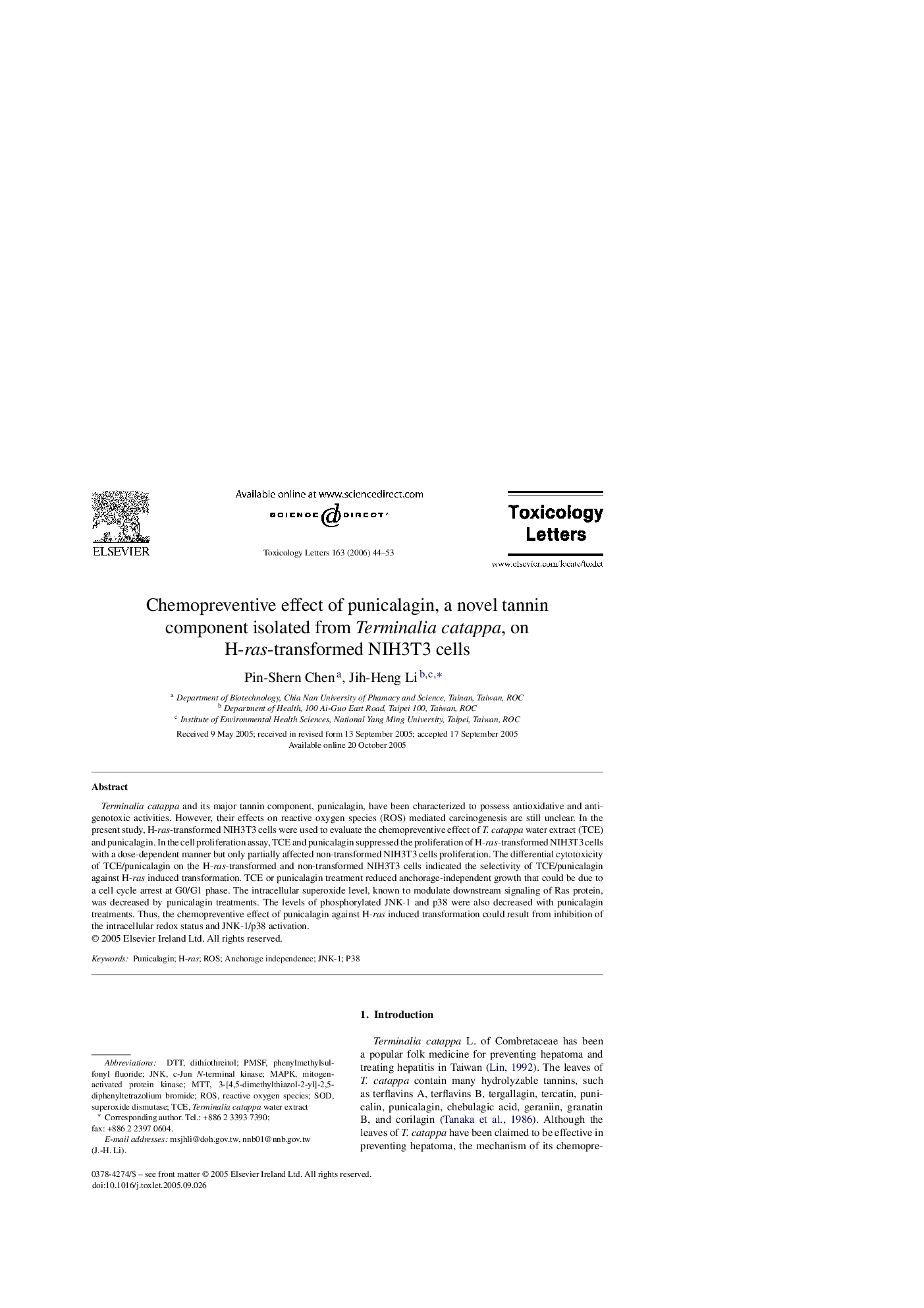| Article ID | Journal | Published Year | Pages | File Type |
|---|---|---|---|---|
| 2602291 | Toxicology Letters | 2006 | 10 Pages |
Terminalia catappa and its major tannin component, punicalagin, have been characterized to possess antioxidative and anti-genotoxic activities. However, their effects on reactive oxygen species (ROS) mediated carcinogenesis are still unclear. In the present study, H-ras-transformed NIH3T3 cells were used to evaluate the chemopreventive effect of T. catappa water extract (TCE) and punicalagin. In the cell proliferation assay, TCE and punicalagin suppressed the proliferation of H-ras-transformed NIH3T3 cells with a dose-dependent manner but only partially affected non-transformed NIH3T3 cells proliferation. The differential cytotoxicity of TCE/punicalagin on the H-ras-transformed and non-transformed NIH3T3 cells indicated the selectivity of TCE/punicalagin against H-ras induced transformation. TCE or punicalagin treatment reduced anchorage-independent growth that could be due to a cell cycle arrest at G0/G1 phase. The intracellular superoxide level, known to modulate downstream signaling of Ras protein, was decreased by punicalagin treatments. The levels of phosphorylated JNK-1 and p38 were also decreased with punicalagin treatments. Thus, the chemopreventive effect of punicalagin against H-ras induced transformation could result from inhibition of the intracellular redox status and JNK-1/p38 activation.
